Patryk Szwargulski
Generalized MPI Multi-Patch Reconstruction using Clusters of similar System Matrices
May 02, 2022


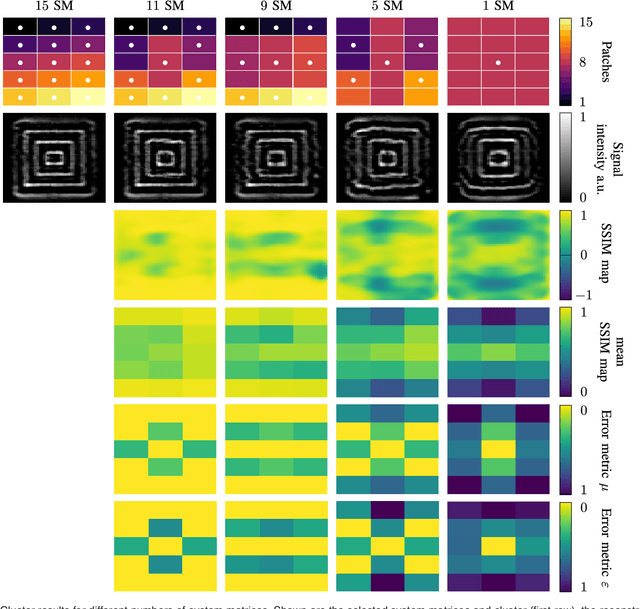
Abstract:The tomographic imaging method magnetic particle imaging (MPI) requires a multi-patch approach for capturing large field of views. This approach consists of a continuous or stepwise spatial shift of a small sub-volume of only few cubic centimeters size, which is scanned using one or multiple excitation fields in the kHz range. Under the assumption of ideal magnetic fields, the MPI system matrix is shift invariant and in turn a single matrix suffices for image reconstruction significantly reducing the calibration time and reconstruction effort. For large field imperfections, however, the method can lead to severe image artifacts. In the present work we generalize the efficient multi-patch reconstruction to work under non-ideal field conditions, where shift invariance holds only approximately for small shifts of the sub-volume. Patches are clustered based on a magnetic-field-based metric such that in each cluster the shift invariance holds in good approximation. The total number of clusters is the main parameter of our method and allows to trade off calibration time and image artifacts. The magnetic-field-based metric allows to perform the clustering without prior knowledge of the system matrices. The developed reconstruction algorithm is evaluated on a multi-patch measurement sequence with 15 patches, where efficient multi-patch reconstruction with a single calibration measurement leads to strong image artifacts. Analysis reveals that calibration measurements can be decreased from 15 to 11 with no visible image artifacts. A further reduction to 9 is possible with only slight degradation in image quality.
System Matrix based Reconstruction for Pulsed Sequences in Magnetic Particle Imaging
Aug 23, 2021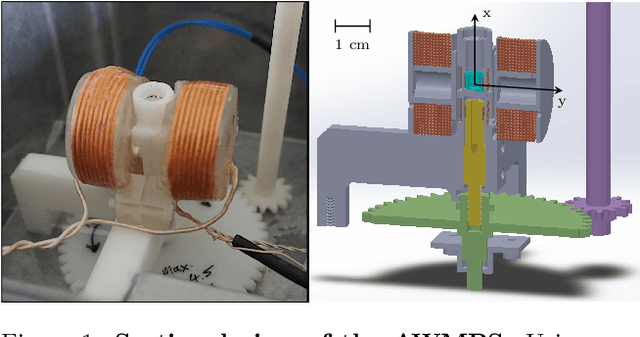

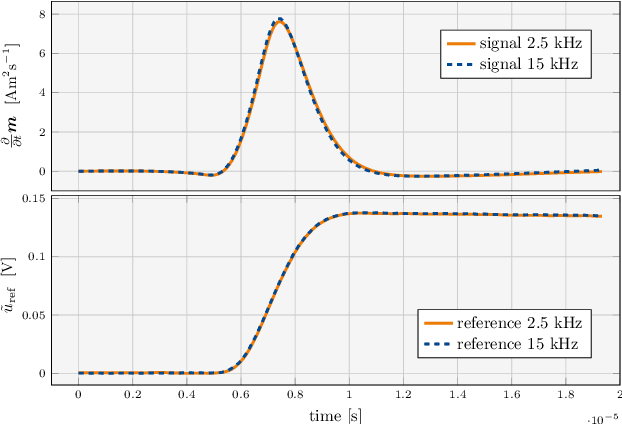
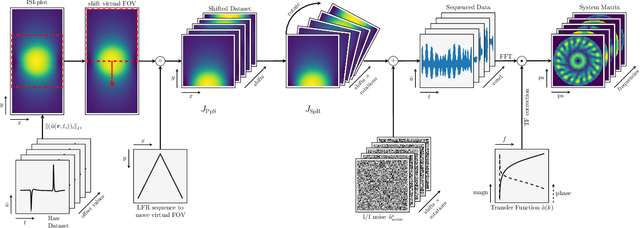
Abstract:Improving resolution and sensitivity will widen possible medical applications of magnetic particle imaging in its clinical application. Pulsed excitation promises such benefits, at the cost of more complex hardware solutions and restrictions on drive field amplitude and frequency. In this work, a sequence is proposed, that combines high drive-field amplitudes and high frequency rectangular excitation. State of the art systems utilize a sinusoidal excitation to drive superparamagnetic nanoparticles into the non-linear part of their magnetization curve, which creates a spectrum with a clear separation of direct feed-through and higher harmonics caused by the particles response. One challenge for rectangular excitation is the discrimination of particle and excitation signals, both broad-band. Another is the drive-field sequence itself, as particles that are not placed at the same spatial position, may react simultaneously and are not separable by their signals phase or signal shape. This loss of information in spatial encoding is overcome in this work by utilizing a superposition of shifting fields and drive-field rotations. The software framework developed for this work processes measured data from an Arbitrary Waveform Magnetic Particle Spectrometer, which is calibrated to guarantee device independence. Multiple sequence types and waveforms are compared, based on frequency space image reconstruction from emulated signals, that are derived from these measured particle responses. A resolution of 1.0 mT (0.8 mm for a gradient of (-1.25,-1.25,2.5) T/m) in x- and y-direction was achieved and a superior sensitivity was detected on the basis of reference phantoms for the proposed sequence in this work.
3d-SMRnet: Achieving a new quality of MPI system matrix recovery by deep learning
May 08, 2019

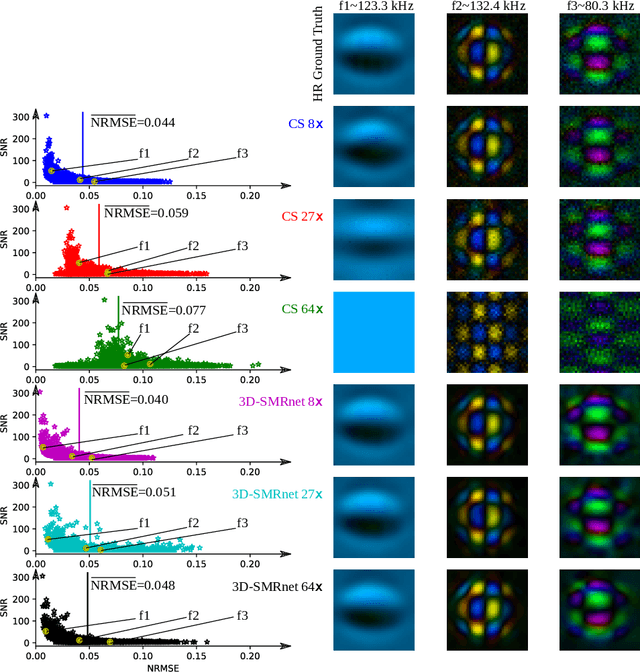

Abstract:Magnetic particle imaging (MPI) data is commonly reconstructed using a system matrix acquired in a time-consuming calibration measurement. The calibration approach has the important advantage over model-based reconstruction that it takes the complex particle physics as well as system imperfections into account. This benefit comes for the cost that the system matrix needs to be re-calibrated whenever the scan parameters, particle types or even the particle environment (e.g. viscosity or temperature) changes. One route for reducing the calibration time is the sampling of the system matrix at a subset of the spatial positions of the intended field-of-view and employing system matrix recovery. Recent approaches used compressed sensing (CS) and achieved subsampling factors up to 28 that still allowed reconstructing MPI images of sufficient quality. In this work, we propose a novel framework with a 3d-System Matrix Recovery Network and demonstrate it to recover a 3d system matrix with a subsampling factor of 64 in less than one minute and to outperform CS in terms of system matrix quality, reconstructed image quality, and processing time. The advantage of our method is demonstrated by reconstructing open access MPI datasets. The model is further shown to be capable of inferring system matrices for different particle types.
 Add to Chrome
Add to Chrome Add to Firefox
Add to Firefox Add to Edge
Add to Edge